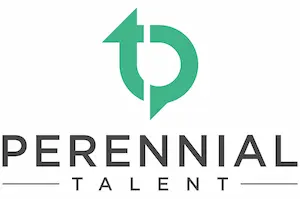What Do Good Competencies Look Like?
There are many examples of competency models out there. What do the best ones have in common?
Hint… the best competencies are those that have multiple stages of development or multiple levels.
Multi-stage competencies:
- Describe performance for someone still learning the competency up to someone with vast expertise.
- Describe many different jobs across your organization using the same competency.
- Enable employees and their managers to rate themselves against their current role and any other role that they may wish to move into.
Let’s look at the 5 must-have features of a good competency.
Must-Have #1: Name
Competencies should have a name or title that describes at a glance what it is about.
Tip: The name should focus on a single competency and not overlap with other competencies. Ideally, try to use only 1-2 words (e.g., Problem Solving, Innovation).
Must-Have #2: Definition
The definition should describe what the competency means in a sentence. It should provide an overview of the expected behaviours.
Tip: Start the definition with a verb to ensure that the competency is actionable and observable.
Must-Have #3: Key Areas
Key areas describe the general themes or key actions associated with success.
Tip: Focus on the critical (“must haves”) themes to ensure ease of use and simplicity. Between 3 and 5 key areas is ideal.
Must-Have #4: Stages of Development
Stages of development describe the different stages or levels of learning. These stages range from someone still developing the competency to someone who has mastered it.
Tip: Four stages of development are ideal.
- Use an accumulative model. Don’t repeat example behaviours as you move from one stage to the next. If someone can demonstrate the example behaviors at the advanced stage, then they are able to already demonstrate the behaviors listed under the Intermediate and Developing stages.
- The behaviours listed under each stage should become more complex as you move from one stage to another.
- Developing: Still learning. Applies the competency in basic situations.
- Intermediate: Independent. Applies the competency in a wide range of typical situations.
- Advanced: Deals with complexity. Applies the competency in new or ambiguous situations.
- Mastery: Go-to authority. Creates, innovates, or adapts solutions, techniques, and approaches.
Must Have #5. Example Behaviours
Example behaviours contain the key aspects of the competency and should define the key observable behaviours that someone needs to demonstrate to be proficient in their role.
Tip: Good example behaviours are those that:
- Begin with one, and only one verb. That is, focus on one single action rather than multiple actions.
- Correct: Creates challenging and realistic learning goals.
- Incorrect: Creates, measures, and provides feedback on learning goals.
- Incorrect: Goals are made with challenging and realistic intentions.
- Are observable. That is, you should be able to see someone doing it.
- Correct: Tries new ways of doing things, adjusting approach based on lessons learned.
- Incorrect: Demonstrates an open mindset to learning new things.
- Do not include unnecessary adverbs (e.g., effectively, successfully).
- Correct: Identifies own learning style and preferences for learning.
- Incorrect: Identifies own learning style accurately and preferences for learning effectively.
- Incorrect: Successfully and quickly identifies own learning style and preferences for learning.
- Include one to two example behaviours per Key Area.
Some Examples of Competencies
Let’s walk through an example of a competency, “Taking Office Naps” (an important one we know with more people working from home).
Let’s look at another example. This time, I’ll focus on Continuous Learning.
By using competencies with the following 5 features, you can save yourself time and make sure that everyone has a clear understanding of what success looks like!
- Name
- Definition
- Key Areas
- Stages of Development
- Example Behaviours




